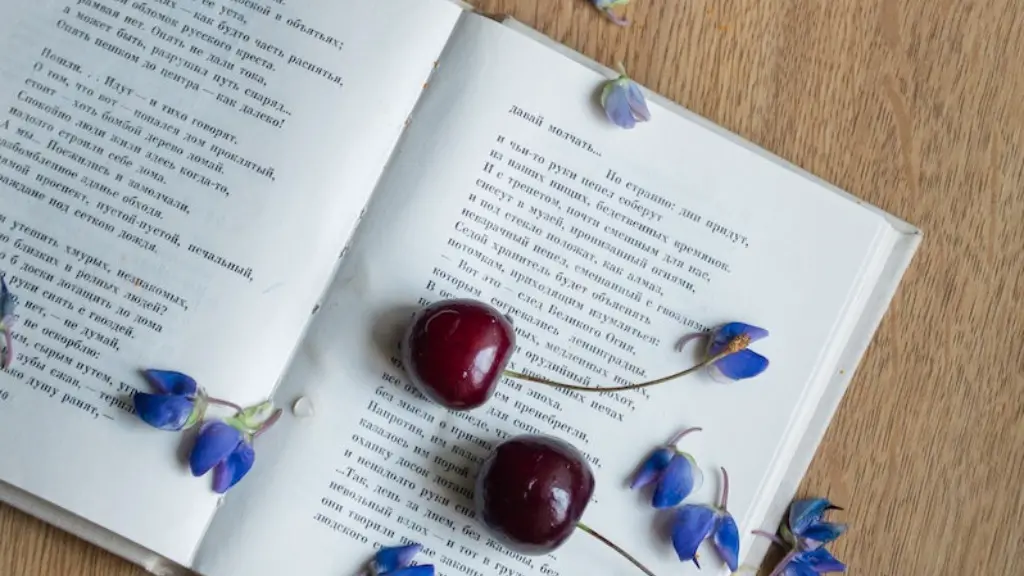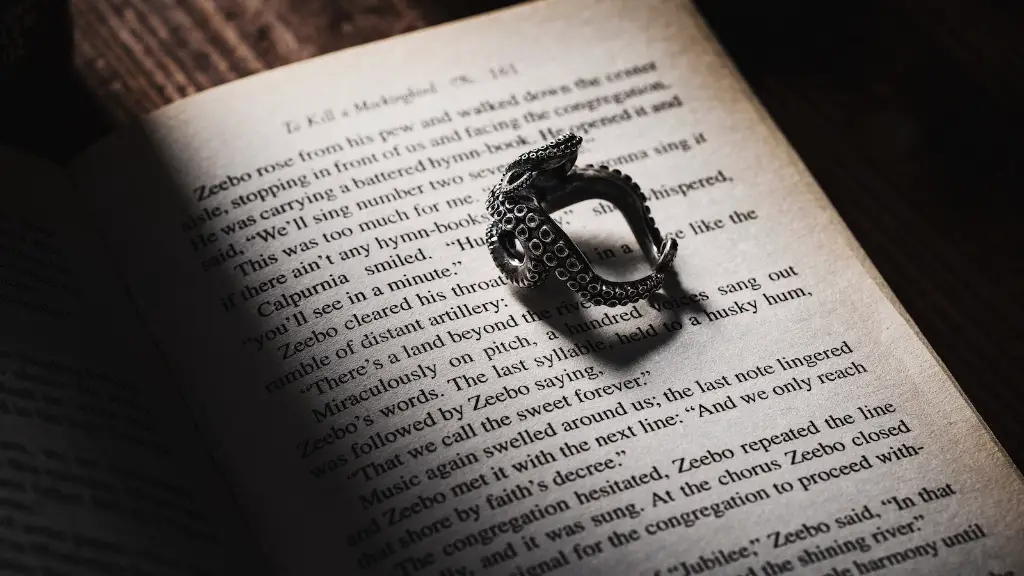What is the Use of Alliteration in Poetry?
Alliteration is a form of repetition used in both prose and poetry to create a melodic effect and draw attention to certain words. Writers use it to emphasize and enliven the rhyme, metre, and sound of words. Alliteration occurs when the first consonant sound (or speech sound) of several words that are close together are the same, such as ‘sleeping sea’ or ‘beautiful bay.’ This phonetic repetition of consonants is known as alliteration.
Alliteration is commonly used by poets and writers to create a specific effect and give their work a unique feel. It can convey a sense of energy, humour, and rhythm to a poem or story, as well as adding depth and meaning. Alliteration can also be used to focus the reader’s attention on the mood and the subject matter of the narrative. For example, in the line, “The sudden sun sent shimmers and shivers,” the repeating ‘s’ sound serves to draw attention to the suddenness of the sun’s appearance.
Alliteration is an especially powerful tool when employed in poetry. The earliest form of English poetry, Old English poetry, relies heavily on alliteration. Alliteration was used in Old English poetry to bring out the emotional and spiritual meaning in a poem. By using alliteration in poetry, a poet can emphasize certain words, evoke certain images, and add texture to their verses. The repetition of the same letter or sound can have a powerful and emotional impact on the reader or listener. For instance, the phrase “misty mountain mornings” conjures up a peaceful, dreamy atmosphere and the phrase “crisp clean clatter” invokes an energetic, bustling atmosphere. When used carefully and purposefully, alliteration can bring a poem to life by adding layers of richness and depth to the language.
Alliteration can also bring clarity to a poem, making it easier for the reader to understand and remember. Phrases such as “big blue bird” or “brilliant blue butterfly” are both easier to remember than “large avian organism” or “iridescent lepidopteran.” Alliteration can also be used to drive home a point or a specific message in a poem, for example, the phrase “let’s make advances, not mistakes” emphasizes the message of positivity and progress. Moreover, it can be used to highlight certain aspects of a character or scene with unexpected language. For instance, by saying “the cat crept slowly” instead of simply “the cat crept,” the writer adds a sense of suspense and intrigue to their work.
Examples of Alliteration in Poetry
Alliteration is commonly used in poetry, both in traditional forms and in more modern, contemporary poetry. In William Wordsworth’s poem “The World Is Too Much with Us,” he employs alliteration to emphasize the frantic pace of the modern world: “Getting and spending, we lay waste our powers.” The repetition of the “g” sound conveys the sense of overwhelming obligations, worries, and pressures associated with the contemporary life. Similarly, T. S. Eliot’s “The Love Song of J. Alfred Prufrock” uses alliteration to help create a dreamy atmosphere which mirrors Prufrock’s introspective musings: “And time yet for a hundred indecisions,/And for a hundred visions and revisions.” The sound of both “t” and “v” in that line aids in conveying a sense of uncertainty and nostalgia.
In more modern poetry, too, alliteration has come to play a vital role in the work of some of the most renowned poets. Take W. H. Auden’s “The Unknown Citizen,” which uses alliteration throughout to convey a sense of rhetorical questioning and frustration: “He was found by the Bureau of Statistics to be/One against whom there was no official complaint.” Here, the repetition of the letter “f” emphasizes the bureaucratic nature of society and the detachment of the titular character.
Use of Alliteration in Advertising
In addition to being used in poetry and other types of writing, alliteration is also incredibly popular in advertising. Alliteration is used in advertising to add melody and musicality to the language, and to make messages more memorable and impactful. As a result, advertisers and copywriters often opt for alliterative phrases in order to capture the reader’s attention and convey the desired message in a more compelling way. For example, Chevrolet’s now-famous slogan “See the USA in your Chevrolet” is an excellent example of alliteration being used to great effect in advertising.
Alliteration can also be used to engage viewers by adding a playful element to an advertisement. The alliterative phrase “Smooth and Strong” can be used to emphasize the qualities of a product, for instance, and a catchy phrase such as “Tastier Toast To-Go” could be used to draw attention to a recently-launched snack food. Many companies use alliterative phrases as part of their branding and marketing efforts in order to capture the public’s interest and create an emotional connection with the product or service they are promoting.
The Benefits of Alliteration
The biggest benefit of using alliteration in poetry, prose, and advertising is that it helps to make messages memorable and poignant. Alliteration helps to create rhythm, mood, and imagery, as well as convey complex messages in the most economical manner possible. Furthermore, it can effectively emphasize certain words and phrases in order to draw attention to a certain message or idea.
Alliteration used in poetry and prose can also evoke a sense of emotion and introspection on the reader’s part. The deliberate use of alliteration can significantly enhance a poem or prose, making it more meaningful, powerful, and impactful. Additionally, readers will often remember alliterative phrases and lines of poetry, thus allowing the poet to leave a lasting impression.
The Drawbacks of Alliteration
Although alliteration is an effective tool for poets, writers, and advertisers, it can be overused or used in a way that detracts from the quality of the text. Writers should take care to ensure that alliteration is used appropriately and judiciously—it should not be used too often or in an arbitrary manner.
Another downside to using alliterative phrases is that if too much alliteration is used in a poem or story, it ceases to have an effect. Additionally, if alliteration is used without any other variation of sounds or rhythms, it can become tedious and monotonous. As such, alliteration should be used with care and consideration in order to ensure that the desired effect is achieved.
Creative Ways to Use Alliteration
When it comes to using alliteration in poetry and prose, there are a number of creative ways that writers can use it to their advantage. For example, alliteration can be used to create a pattern of rhythm and sound that corresponds to the message that the author is trying to convey. Writers can also employ alliteration to draw attention to certain words and phrases and to drive home a particular point or argument.
Alliteration can be used to add humour to a poem or story by employing catchy ‘tongue twisters.’ Slang or jargon can be incorporated into the alliteration to create a unique atmosphere and flavour to the work. Writers can also incorporate alliteration into their own ‘catch phrase’ or slogan in order to further define their own signature style.
Finally, alliteration can also be used to set a particular mood or tone for a poem or story. The alliterative tone can be used to evoke a sense of energy or sadness, suspense or joy, and alliterative phrases can be used to indicate movement and also to create an ‘atmosphere of sound.’
Alliteration as a Writing Tool
Alliteration is a powerful tool that can be used by poets and writers to imbue their works with life. It can be used to emphasize certain words and ideas, to evoke certain moods, and to create imagery and rhythm in poetry and prose. By employing alliteration judiciously, writers can add depth and meaning to their work and make their messages even more memorable and impactful.
Conclusion
Alliteration is a powerful and versatile tool, whether used in poetry, prose, or advertising. It can be used to create texture and mood in writing, to drive home a point or argument, and to emphasize certain words and ideas. Alliteration is also an effective way for writers to create a ‘catch phrase’ or slogan that uniquely identifies their work. By using alliteration judiciously and creatively, writers can add layers of complexity, depth, and meaning to their work.




